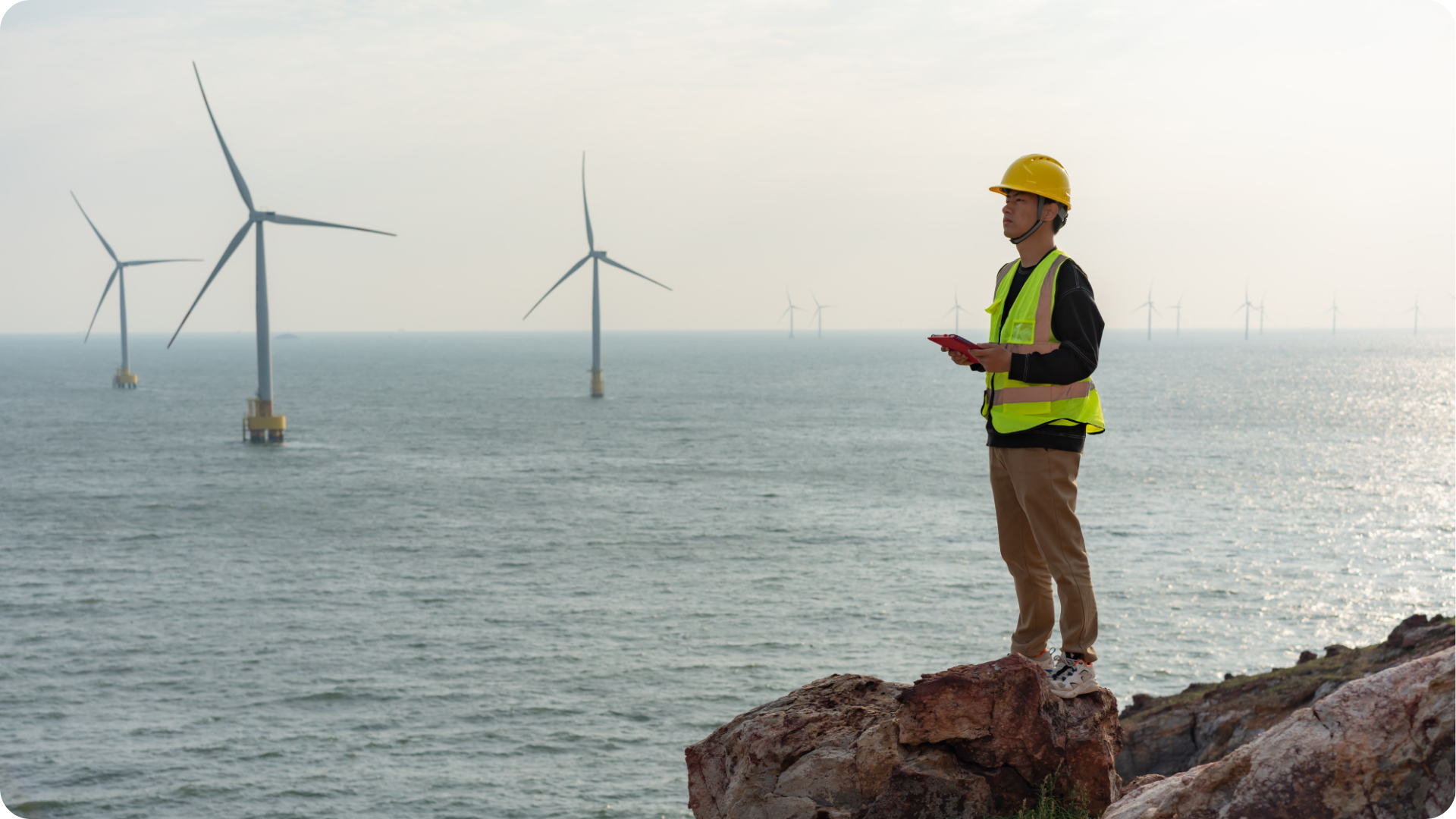A Massive Opportunity for the North
For the first time in over a century, a major industry is emerging in the UK that is not dominated by London. CleanTech, born from the renewable energy sector, particularly offshore wind, is rapidly gaining momentum, and coastal regions are leading the charge. Stefan Haase adds “from Newcastle and the North East to Hull, the Humber, Aberdeen, and Edinburgh, port cities and industrial hubs are poised to capitalise on a once-in-a-generation economic shift”.
The UK’s extensive coastline and major ports provide a strategic advantage for investment, positioning these regions as early movers in CleanTech. Economic ties to the Nordics, especially the energy industry, are further accelerating investment in offshore wind and other renewable energy sources. The east coast, in particular, has become a focal point for international investment, strengthening its position as a CleanTech powerhouse.
The Challenges
While the opportunities are immense, CleanTech in the UK still faces fundamental challenges, mainly due to a lack of infrastructure and an immature supply chain. For the sector to be truly sustainable, ecosystems must be developed locally and regionally, capturing long-term economic benefits and reducing dependence on overseas manufacturing and logistics.
This shift presents a significant growth opportunity for businesses in coastal regions, especially those with a legacy in engineering, manufacturing, and energy. However, many of these suppliers have not yet embarked on meaningful digital transformation, limiting their ability to meet the demands of a digital-first CleanTech sector.

The Role of Digital Transformation
To bridge this gap, firms need the support of technology experts that have led large-scale transformation in other industries. The same approach to disruptive digital innovation that has been revolutionary in sectors from Financial Services to Retail — automation, AI-driven analytics, cloud operations, and mobile enablement, for example — can drive the transformation of new CleanTech market participants.
In the low-carbon energy sector, data is a particularly vital asset. From modelling and forecasting to business operations, organisations that use data effectively gain a competitive edge. The ability to rapidly adapt to satisfy clients and partners navigating changing policies, economic conditions, and regulatory shifts requires an innovation mindset, business agility, and deep expertise in data-driven leadership. These ways of working have become widespread in many organisations but are still nascent in many industrial businesses.
Why Digital is Essential for CleanTech Growth
hedgehog lab CTO, Joe Thompson identifies several factors that make digital transformation not just beneficial but essential for the CleanTech industry:
- Data-Driven Decision Making: Predictive analytics and AI-powered forecasting can help CleanTech companies manage risk, optimise resource allocation, and improve efficiency. For both operational and commercial activities, intelligent use of data will yield better outcomes.
- Agility in a Volatile Market: Technologies, policies and economic conditions in CleanTech are more volatile than in traditional industries. Businesses must be able to pivot strategies quickly — enabled by digital tools and flexible, scalable systems that put knowledge into the hands of those who are guiding strategies.
- Sustainability Governance and Transparency: Lifecycle planning, environmental impact assessments, and regulatory compliance demand clear, real-time insight. Modern data platforms simplify reporting to bring stronger accountability and streamlined sustainability governance.
- Seamless Collaboration through Interoperability: CleanTech is built on partnerships across borders and industries. Digital platforms must be open, standards-based, and interoperable to enable efficient collaboration and unlock the growth potential of a rapidly expanding sector.

Seizing the Opportunity
For CleanTech to deliver on its promise, businesses in the sector must embrace digital transformation at every level. The combination of emerging technologies, strong use of data, and digital-first operations will determine the sector’s long-term success.
Strategy experts and digital product consultancies like Whitecap and hedgehog lab, have a critical role to play in driving this transformation. By applying proven expertise from a diverse range of industries, we can help CleanTech businesses adapt, pivot and evolve to maximise the opportunities of a rapidly growing sector.
The North is certainly at the heart of this CleanTech revolution. By investing in digital capabilities, regions like the North East can cement global leadership in sustainable energy — delivering economic growth, job creation, and environmental benefits for decades to come.
Delve deeper in Sustainability for Wealth Management
If this article sparks any thoughts, or if you’re navigating a strategic challenge in your organisation, we’d welcome a conversation. Get in touch.
Further reading
How can digital innovation help drive a more sustainable future in wealth management? Joe Thompson, CTO at hedgehog lab, has authored a whitepaper examining the relationship between sustainability and digital strategy in the sector. Read the whitepaper here.
